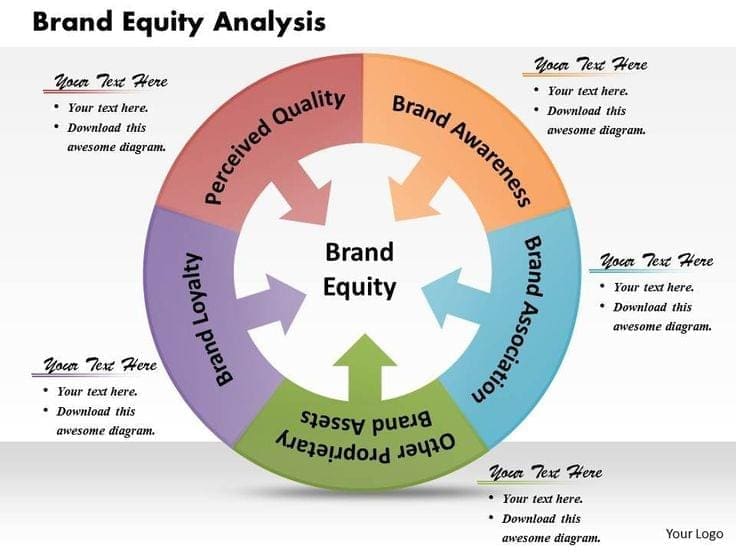Brand Equity : Power of Brands
There’s a big question to introspect by all businesses whether consumer buys products or brands?
Customer buys products to fulfill need/wants whereas it buys brand to fulfill trust ! Consumer buys products which it feels it can trust to fulfill its requirement.
Analyse your next purchase & you will experience power of brand !
A brand’s power derived from the goodwill and name recognition that it has earned over time, which translates into higher sales volume and higher profit margins against competing brands.
Some marketing researchers have concluded that brands are one of the most valuable assets a company has, as brand equity is one of the factors which can increase the financial value of a brand to the brand owner, although not the only one. Elements that can be included in the valuation of brand equity include (but not limited to): changing market share, profit margins, consumer recognition of logos and other visual elements, brand language associations made by consumers, consumers’ perceptions of quality and other relevant brand values.
Consumers’ knowledge about a brand also governs how manufacturers and advertisers market the brand. Brand equity is created through strategic investments in communication channels and market education thus creating awareness amongst consumers and appreciates through economic growth in profit margins, market share, prestige value, and critical associations. Generally, these strategic investments appreciate over time to deliver a return on investment. This is directly related to marketing ROI.
Brand equity is strategically crucial, but famously difficult to quantify. Many experts have developed tools to analyze this asset, but there is no agreed way to measure it. As one of the serious challenges that marketing professionals and academics find with the concept of brand equity, the disconnect between quantitative and qualitative equity values is difficult to reconcile. Quantitative brand equity includes numerical values such as profit margins and market share, but fails to capture qualitative elements such as prestige and associations of interest. Overall, most marketing practitioners take a more qualitative approach to brand equity because of this challenge. In a survey of nearly 200 senior marketing managers, only 26 percent responded that they found the “brand equity” metric very useful.
Lets understand the above narration with help of corporate examples of Textile brnads like Reliance , Arvind,Raymonds,Welspun,Century,Tatas,Birla’s,Bombay Dyeing,Dupont & many more. The products manufactured by these conglomerates are class apart. They have strategically developed products which are par excellences & has been top of the consumer’s mind to fulfill its need /wants.
Product attributes like quality,pricing,availability,packaging ,innovation,diffrentation communication, customer relationship ,consumer grievance & feedback has been just perfect thus creating TRUST ! Brands have won hearts of consumers & promise to deliver each time every time to have similar or better experience by repetitive usage of its products.
BrandAsset Valuator (Young & Rubicam)
Young & Rubicam, a marketing communications agency, has developed the BrandAsset Valuator, BAV, a tool to diagnose the power and value of a brand. In using it, the agency surveys consumers’ perspectives along four dimensions:
- Differentiation:The defining characteristics of the brand and its distinctiveness relative to competitors.
- Relevance:The appropriateness and connection of the brand to a given consumer.
- Esteem:Consumers’ respect for and attraction to the brand.
- Knowledge:Consumers’ awareness of the brand and understanding of what it represents.
Trust allows a brand to gain power over customers which ultimately translates into superior financial performance. By building trust marketers can easily knock off rivals from customer consideration From the customer perspective brands are important. There is pervasive trust deficit in almost all walks of life. The institutions are not able to keep up with the emergent changes. Take the political upheavals in Egypt and Libya, the financial crises enveloping the global economy, September 11, Mumbai attacks and terrorism, scams and corruption in political system and relations with neighbouring countries etc. How is one to live in this environment of suspicion, doubt and distrust? This impacts both physical and psychological well being. It causes tremendous strain and fear. A sense of loss of control pervades one’s existence.
Set against this background, at least in consumption situations, brands symbolize consistency and certainty. Brands are tension reducing mechanisms. Amidst uncertainty brands are assuring and comforting. Imagine existence in a world without brands. The luxury to short cut buying would not exist. You would not have reached out for your tried and tested brands. Brands simplify life by providing opportunities to develop short cuts. The mental eloquence so saved is used to resolve other conflicts.
Key Reference :
- businessdictionary.com/definition/brand-equity.
- wikipedia.en
- blog.hubspot.com
- Managing brand equity – David Aaker
- Principles of branding – David Aaker
- Google Images



